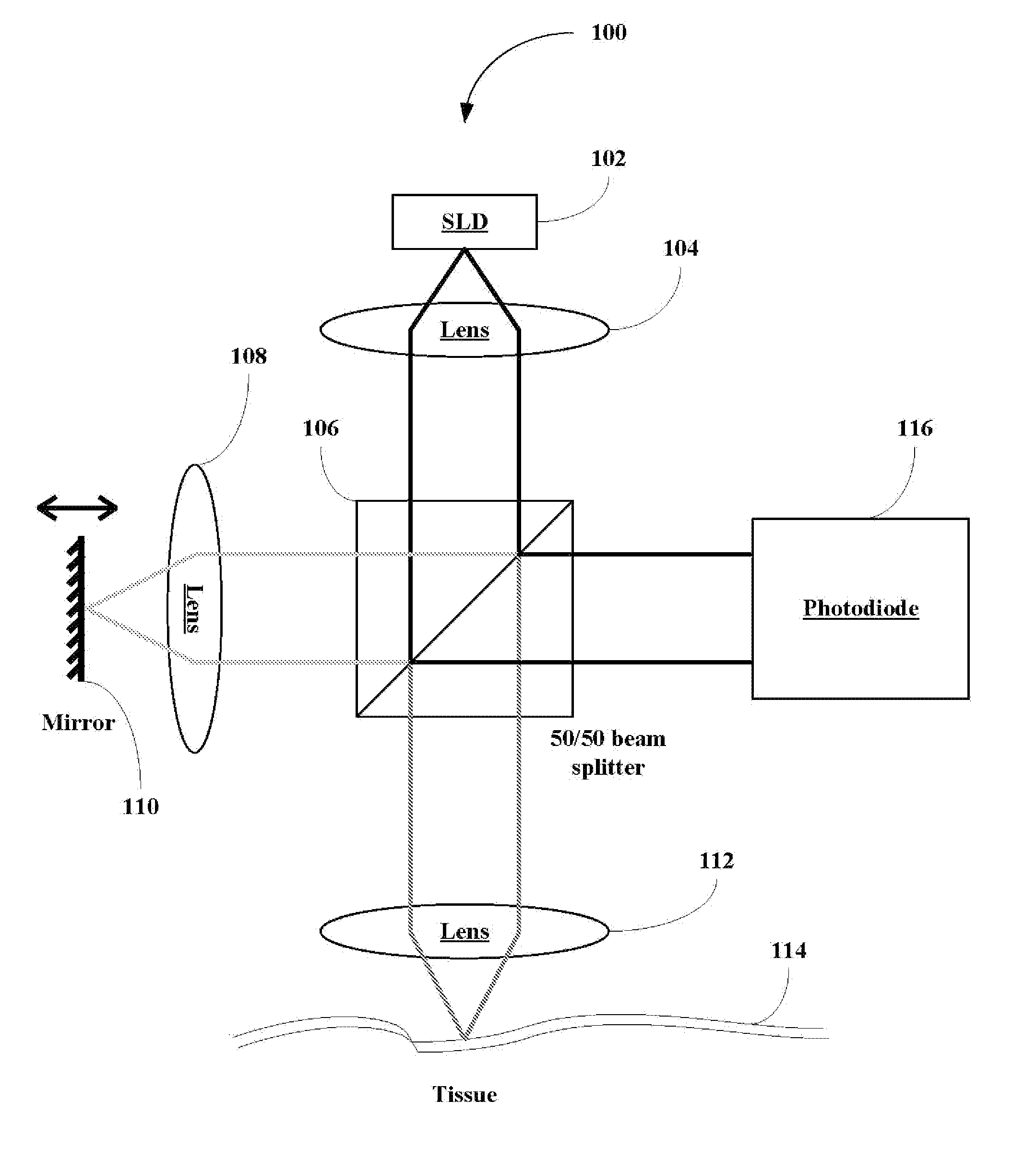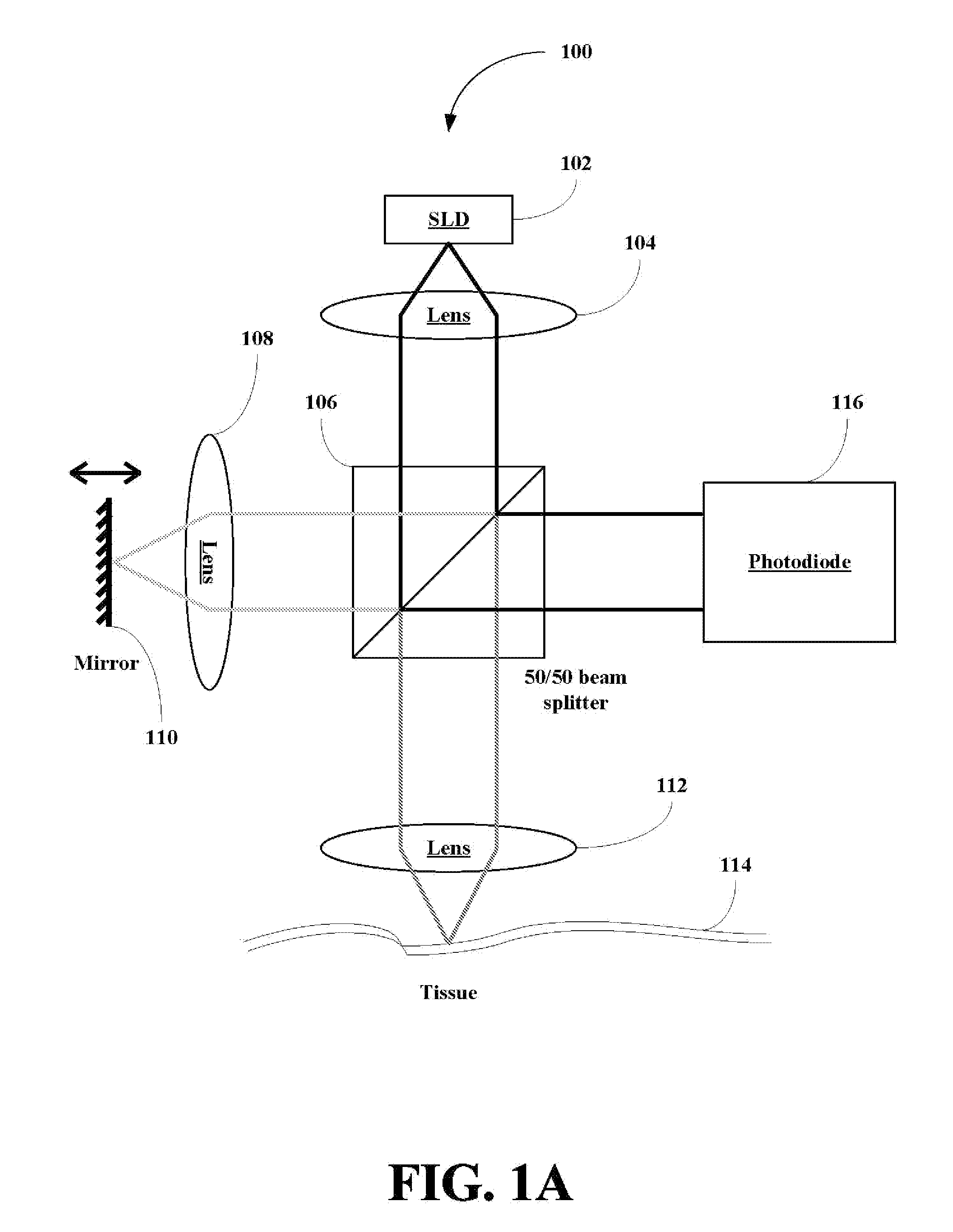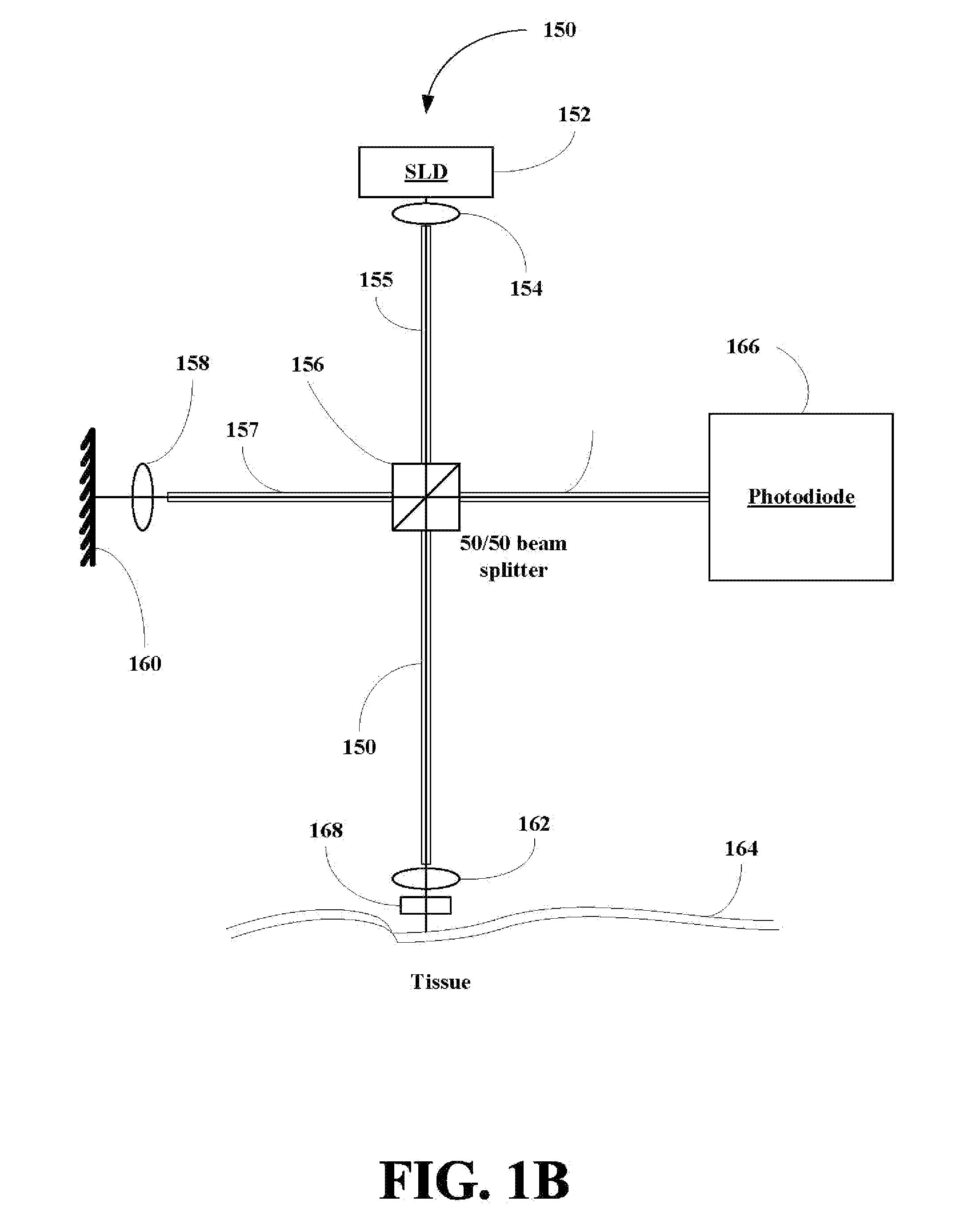Continuous noninvasive glucose monitoring in diabetic, non-diabetic, and critically ill patients with oct
a non-invasive, diabetic technology, applied in the field of continuous non-invasive glucose monitoring in diabetic, non-diabetic, critically ill patients with oct, can solve the problems of inability to use continuous monitoring, inability to easily adapt to continuous monitoring, and difficulty in removing the method of u.s. patent no. 6,725,073. , to achieve the effect of improving contrast, enhancing glucose specificity, and efficient removal
- Summary
- Abstract
- Description
- Claims
- Application Information
AI Technical Summary
Benefits of technology
Problems solved by technology
Method used
Image
Examples
Embodiment Construction
[0040] The inventors have developed a novel optical coherence tomography (OCT) technique for noninvasive, continuous glucose monitoring based on interferometric measurement and analysis of low-coherent light back-scattered from specific layers of a tissue for use in diabetic and non-diabetic patients, especially critically ill patients or critical care patients. The inventors have identified specific tissue layers in which a correlation between a OCT signal slope and a blood glucose concentration is highest. The inventors have also found that blood glucose concentrations can be monitored using OCT using low-coherence interferometry (LCI) by probing specific layers within a tissue area. The term substantially similar morphology means that the morphology of the tissue over the area that is to be scanned by the OCT probe does not change substantially or alternatively, the tissue layer as continuous, morphologically similar and contiguous. The inventors have found that the tissue area m...
PUM
 Login to View More
Login to View More Abstract
Description
Claims
Application Information
 Login to View More
Login to View More - R&D
- Intellectual Property
- Life Sciences
- Materials
- Tech Scout
- Unparalleled Data Quality
- Higher Quality Content
- 60% Fewer Hallucinations
Browse by: Latest US Patents, China's latest patents, Technical Efficacy Thesaurus, Application Domain, Technology Topic, Popular Technical Reports.
© 2025 PatSnap. All rights reserved.Legal|Privacy policy|Modern Slavery Act Transparency Statement|Sitemap|About US| Contact US: help@patsnap.com



